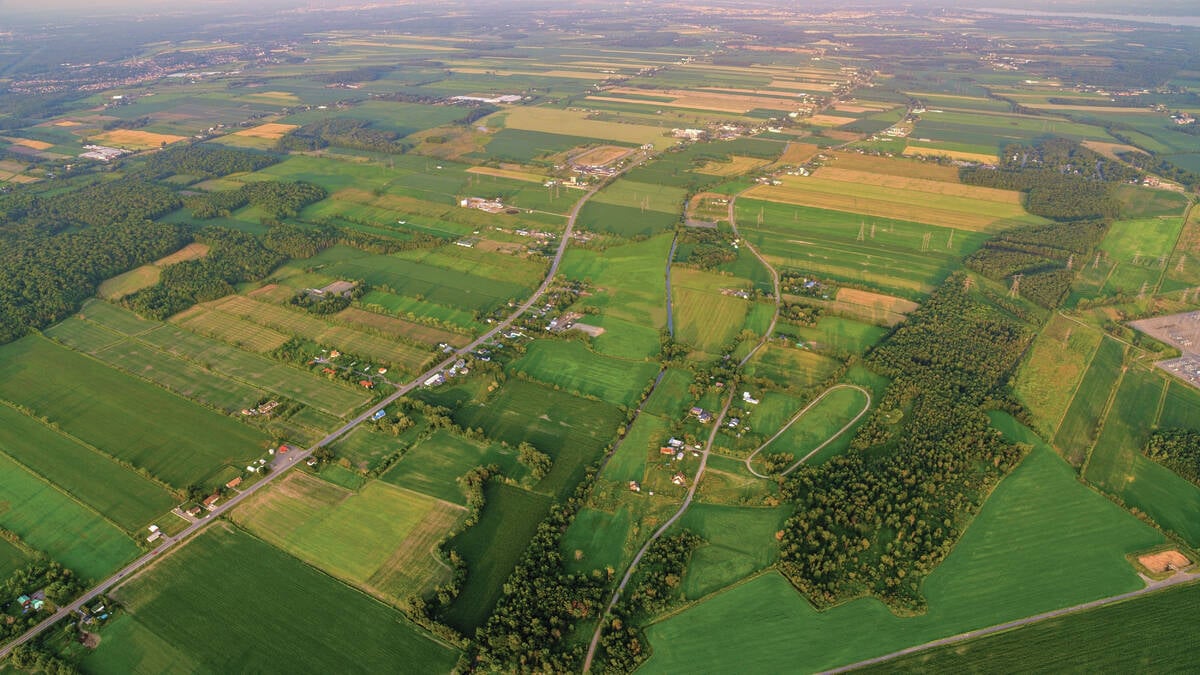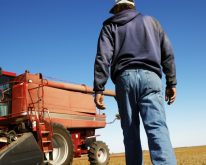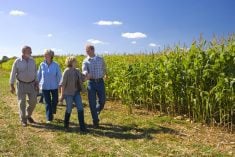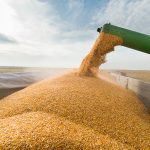Australia and New Zealand have had their fair share of agricultural challenges. They’ve known fires, tsunamis and cyclones, to name a natural few, and they have suffered from the politics of export markets, not to mention supply-demand crashes in world prices for wool, beef and milk.
And that’s without mentioning droughts which, according to Australia’s Bureau of Meteorology, are increasing in duration, frequency and intensity, making their fire seasons even longer and their extreme heat even more extreme.
Meanwhile, in New Zealand, the country’s earnings on exported milk have been on a roller coaster since 2008, taking a nasty fall in 2014 and hitting a terrible low this past summer.
So what better place could there be for learning about farm resilience?

In fact, it’s there that Nicola Shadbolt is farm and agribusiness management professor at New Zealand’s Massey University, and where she is a world-class expert on farmer resilience, which she defines as the ability of a farm to adjust either within a system (as with buffer capacity) or across systems by adapting or transforming their operation.
Shadbolt knows about managing farm risk firsthand as her family farms about 5,600 acres with five equity partnerships, feeding sheep, deer, milk cows or beef cattle. “We grow grass and feed it to what’s the most profitable,” she says.
So her research started from her personal observations that for farmers, risk can be positive and motivating, and that farmers are already good at mitigating risk. In fact, they do it all the time, and they often see threats as opportunities.
Read Also

Farm peer groups still provide value
A look at whether farm peer groups are still relevant.
- Read more: Six habits of highly successful farmers
“They (farmers) like to crack something, to stand up and take a punt,” Shadbolt says. “It’s why they are in the business. They like to create opportunities… they get a buzz from it.”
Although scores of experts seem intent on teaching farmers how to manage risk, it’s actually the farmers who are the experts. It’s what they do every day.
“When they get up in the morning, they manage uncertainty — whether it’s floods, droughts, markets, weeds, people, machinery, disease, weather or a combination,” Shadbolt says.
So instead of teaching farmers how to manage risk, the Kiwi farm management research team assumed farmers are resilient by definition, and they launched a survey and they dug into a comprehensive economic database from over 1,000 dairy farms in New Zealand to order to learn how they do it.
Over the last nine years, they’ve qualitatively looked at the resilience of individuals and also quantified big populations of data, sort of like heat maps layered on top of one another to identify groups (or hot spots), and then asked why some farmers were more resilient than others.
It happens they did the research during a time of extreme market volatility in world milk prices, so it proved ideal for finding answers to explain why some farms and farmer owners are better able to survive turbulence. Most farm studies are done in average economic conditions.
“During this time frame we took these great swags of data and found indicators of success,” says Shadbolt.
Resilience refers to what a farm business learns from and how it responds to shocks, both negative and positive, over time, and the research found it’s best measured by analyzing operating profit margin (OPM), says Shadbolt.
OPM is a measure of operating efficiency, and although it varies from year to year, it can be benchmarked against peers to see if a farm is doing all right in the current larger environment.
Low-cost isn’t always best
One of the Massey team’s first studies into resiliency compared the OPM of lower-input against higher-input farms. They focused on the buffering capacity, or the ability to “bounce without breaking” of pastoral dairy systems in New Zealand, one of the lowest-cost milk production systems in the world.
This study found short-term optimization and long-term adaptability weren’t actually linked to whether a farm was low-input or high-input. Instead, it was the farms with systems in the middle of the range that were best at responding both to favourable and to unfavourable conditions. They were able to improve and protect results in both cases.
In other words, it wasn’t necessarily low or high cost of production as much as having the ability to accommodate change that made them more resilient.
Farms with consistently stronger OPMs were more flexible so they could withstand shocks, Shadbolt says. “They achieve the best they can, depending on the year.”
Researchers also found that debt level did not necessarily determine efficiency. Instead, resilience was tied to more efficient management, particularly of labour and production.
The recipe for resilience
Not surprisingly, the most resilient farms generated more profit per unit of output, they managed expenditures in line with prices, they had higher return on assets, and they produced more per hectare and per labour unit.
Also, these farms actively managed their debt-servicing capacity, so they were more cash liquid and generated more discretionary cash for investment and personal draws.
That doesn’t mean not spending at all, Shadbolt explains. It means understanding cash flow and using it wisely.
“Farmers respond to better prices with cost spending, and it’s okay to be responsive, flexible,” she says. “I hope this research will change the way we advise farmers about risk, and it will encourage farmers to be more agile, to do partial budgets.”
- Read more: Resilience in the Midwest
The team also looked at attitudes toward risk, strategy and debt. In 2015, Shadbolt and Femi Olubode-Awosola published a paper called Resilience, Risk and Entrepreneurship. “What are the things that make them (farmers) able to keep the ship stable in spite of rough seas?” asks Shadbolt. “What can other farmers learn from them?”
The researchers identified categories of farmers based on their attitudes to risk, ranging from gamblers to those who are cautious. The gamblers were likely in growth stage with their businesses, they perceived mostly upside risk from uncertainties, they produced to full capacity, they didn’t prefer to keep debt low as a risk management strategy, and they were less likely to use practical planning steps.
At the other end of the spectrum were the “experienced but cautious” farmers who were less likely to be actively growing, saw both the upside and the downside of risk, and played it safe by not producing to full capacity.
Between these two groups, however, were the “competent conservative” farmers who managed debt (mostly kept it low) and used practical planning steps.
Contrary to what much of the literature says about risk attitudes and farmer behaviour, the researchers found the most successful group of farmers were actually quite risk neutral, but they had a strong business focus and strong business skills, and they were able to manage high levels of debt.
Armed with a positive attitude to change, these farmers could successfully adapt to changing conditions.
Resilient farms rely on the resilient qualities of human beings, such as flexibility, motivation, perseverance and optimism, says Shadbolt. “You can’t separate the farm business from the farmers,” she says. “I’m a firm believer that people can change, can learn.”
Watch mortgage rates
This past fall several Canadian banks announced increases to their housing mortgage rates. Is this just a post-U.S. election reaction or a long-term adjustment to record-low mortgage rates?
David Clarke, vice-president and investment advisor for RBC Wealth Management and RBC Dominion Securities Inc. in London, Ont., says farmers need to be aware of this trend and how it could potentially have an impact on their business’s debt-handling capacity and long-term plans.
But, other than Bank of Canada announcements, what other factors should we follow?
“The banks’ fixed rates are influenced by the bond market,” says Clarke. More specifically, the price of bonds change according to the outlook for the economy, in Canada and the world, particularly the U.S. Beyond market conditions and interest rates, the factors include things like consumer debt levels, unemployment and housing.
As well, Clarke says recent weakness in long-term U.S. bond prices suggests higher long-term interest rates in the U.S.
Craig Klemmer, senior agricultural economist with FCC, says current changes to mortgage rates are related to movements in the U.S. economy and the future outlook overall, as the U.S. Federal Reserve is expected to continue its focus on interest rates through 2017. And while it’s important to look at both Canadian and U.S. bond markets, he says increasing Federal Reserve key interest rates also have an impact on bond values. Increased interest rates increase expected bond yields for Treasury Bonds and push all bonds yields higher.
“Market expectation of the U.S. Federal Reserve increasing interest rates in December are very high and now we are beginning to see bond yields increase, despite no announcement,” says Klemmer at the end of November.
If you are waiting to hear if the Bank of Canada or Federal Reserve are going to raise rates, often the bond market has already responded and begun pricing in a part of the changes in fundamentals, says Klemmer.
The decision between locking in a rate and/or using a floating rate should match the long-term strategic plan of your business. Although long-term mortgage prices are different for each customer depending on loan characteristics and risk profile, generally, in the last decade rates have declined and remain historically low. So variable rate loans have been low risk but is that about to change?
“There is no right strategy for managing debt allocation between fixed and variable loans. It is all about one’s risk tolerance,” says Klemmer. “Having a balance between fixed and variable rate interest products minimizes ones exposure to market fluctuations.”















